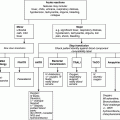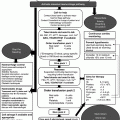Chapter 18 Andrew Retter1,2 and Jo Howard1 1 Department of Haematology, Guy’s and St Thomas’ NHS Foundation Trust, London, UK 2 Intensive Care Department, Guy’s and St Thomas’ NHS Foundation Trust, London, UK Sickle cell disease (SCD) and thalassaemia are both inherited disorders of haemoglobin (Hb) associated with considerable morbidity and mortality. Patients with both conditions can present to critical care in a number of different ways. These fall into three distinct categories: This chapter will describe the acute and chronic complications of both conditions that may result in admission or complicate an admission to the critical care unit. The peri-operative care of patients with SCD will also be discussed. Sickle cell disease is the most common inherited disorder worldwide, and there are approximately 12–15,000 affected individuals in the UK. It is an autosomal recessive condition, and patients with homozygous SCD (HbSS) have a severe disease phenotype. The carrier form (sickle trait, HbAS) is in essence an asymptomatic condition. The sickle Hb gene can be also inherited with HbC, β-thalassaemia, HbO-Arab, HbD or HbE, causing the compound heterozygote conditions HbSC, HbS β-thalassaemia and so forth. These tend to be associated with a more moderate phenotype. The abnormal haemoglobin S (HbS) arises from a point mutation in the β-globin gene. HbS has decreased solubility and increased viscosity compared to HbA, with a tendency to form polymers, which is increased by hypoxia. The formation of Hb polymers irreversibly distorts the cell, disrupting its membrane and producing the classical sickle cell shape on a blood film. These distorted cells break down more rapidly, leading to anaemia. They can also become trapped in the microvasculature and cause downstream ischaemia. In the majority of situations, patients will be aware of their diagnosis. Occasionally, the first presentation will be with an acute complication requiring critical care, or a patient may be admitted acutely unwell and unable to inform the medical team of their diagnosis. A suspicion of SCD may arise because of the clinical picture, and patients will usually have an Hb of 60–90 g/dL, although this can be higher in HbSC disease. There is a reticulocytosis, although the reticulocyte count can be low in some situations such as aplastic crisis due to parvovirus B19 infection. The blood film shows marked variation in red cell size with sickle cells and target cells; basophilic stippling is frequently seen in conjunction with Howell–Jolly bodies. A positive sickle solubility test indicates the presence of HbS but cannot differentiate between sickle cell trait and homozygous disease. However, the combination of positive solubility test and a consistent blood film allows a rapid diagnosis to be made. The diagnosis should be confirmed, promptly, with a definitive laboratory test such as high-performance liquid chromatography. The dominant clinical feature of SCD is a chronic haemolytic anaemia with repeated episodic acute painful crises due to vaso-occlusion. SCD is also associated with multi-organ acute and chronic complications. The clinical features of SCD are summarized in Table 18.1. Despite our understanding of the precise genetic aberration, there is profound variability in the clinical severity of SCD. Some patients live an almost normal life, free of significant problems; others develop severe crises from a very young age or have life-threatening disease complications. The life expectancy of patients with SCD is reduced but is increasing due to the improvement in supportive therapies, notably regular antibiotic prophylaxis, primary stroke screening in children, increased use of hydroxycarbamide or transfusion and improved specialist care. Table 18.1 Clinical features of sickle cell disease (SCD). The complications most likely to require critical care admission are acute chest syndrome (ACS), acute stroke and acute renal injury.
Sickle Cell Disease and Thalassaemia in the Critical Care Setting
Introduction
Sickle cell disease
Diagnosis of SCD
Clinical manifestations of sickle cell anaemia
Complication
Features
Painful crisis
Occurs in the majority (but not all) of patients with SCD, marked variability in the frequency and severity of symptoms
May evolve into a chronic pain syndrome
Neurological
Subclinical microvascular occlusion may be seen on MRI in a substantial proportion of patients. May progress to cause cognitive impairment
Stroke occurs in 10% of children; it is a leading cause of morbidity and mortality
Can be prevented by regular red cell transfusion
Pulmonary
Acute chest syndrome
Leading cause of mortality in adults, high risk of acute respiratory failure
Asthma
There is an established association between SCD and increased airway reactivity
Fibrotic lung disease
Difficult and rare complication of SCD, no direct treatment strategies
Gastrointestinal
Cholelithiasis
The majority of patients have gallstones secondary to the increased haemolysis
Hepatopathy
Rare complication of SCD, which can progress to decompensated liver disease
Renal
Chronic renal failure develops in up to 20% of patients
Urological
Priapism can be devastating in men and lead to long-term sexual dysfunction
Ophthalmology
Proliferative retinopathy is particularly common in patients with HbSC disease
Orthopaedic
Avascular necrosis
Frequent complication particularly of the hip and shoulders, may require replacement
Osteomyelitis
Salmonella is the most common organism, can be particularly difficult to treat
Haematological
Haemolytic anaemia
Chronic haemolysis, usual Hb 60–90 g/L, higher in HbSC
Aplastic crisis
Parvovirus B19 infection may trigger red cell aplasia. The combination of impaired red cell production and increased red cell turnover can be fatal
Splenic sequestration
Typically seen in infants with a rapidly enlarging spleen → fluid resuscitation and cautious transfusion
General principles of management of SCD
Stay updated, free articles. Join our Telegram channel

Full access? Get Clinical Tree






